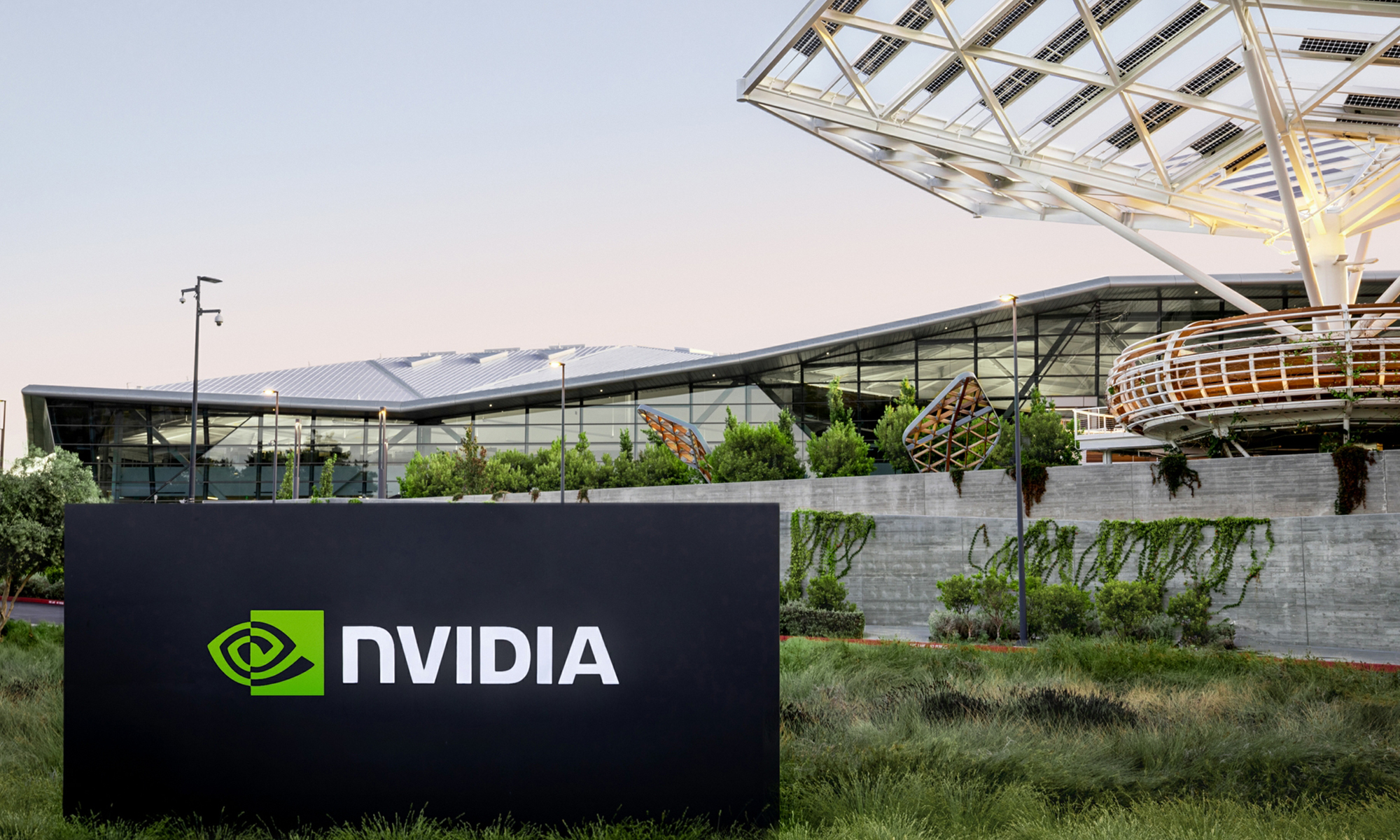NVIDIA (NVDA +1.49%) stock is one-upping an '80s hit tune: Rather than raining mere men, it's raining money. The graphics-chip specialist's stock has returned 52.9% in 2017 through July 12, continuing its winning streak from last year, when it returned 227%.
This performance has naturally increased investor attention. Before considering investing in any company, one of the first things you should know is exactly how it makes its money. So let's look at how NVIDIA brings in the green.

Image source: Getty Images.
When it reports its financial results, NVIDIA breaks out its revenue by two product segments -- graphics processing units (GPUs) and Tegra processors -- and also by four target market platforms: computer gaming, data center, professional visualization, and automotive.
The following charts show how the company's revenue broke out by these two categories in its most recently reported quarter -- Q1 of fiscal 2018. It's generally better to look at a longer period of time, such as a fiscal year; however, growth rates within both segments and platforms are quite different, so percentage breakouts are changing rapidly. Showing you fiscal-year 2017 data wouldn't give you an accurate sense of NVIDIA's business as it stands today.
Revenue breakout by product segment
|
Segment |
Fiscal Q1 2018 Revenue (in Millions) |
Percentage of Total Revenue |
|---|---|---|
|
GPUs | $1,562 | 80.6% |
|
Tegra processors | $332 | 17.1% |
|
Other | $43 | 2.2% |
|
Total | $1,937 |
99.9%* |
Data source: NVIDIA. *Doesn't add up to 100% because of rounding.
NVIDIA's GPU segment is its bread and butter, accounting for nearly 81% of the $1.94 billion in revenue the company generated in Q1. Its GPUs have traditionally been used in computer gaming and professional visualization applications. In recent years, its GPUs have become favored to provide the massive processing power for applications involving deep learning, a discipline within artificial intelligence (AI) in which software aims to simulate human thinking. NVIDIA's data-center platform in particular is benefiting from the growing adoption of AI, as we'll flesh out in a moment.
Tegra processors are used in things that are mobile, such as mobile consumer electronic devices, autos, and drones. This segment has been getting a boost since last spring, when NVIDIA began shipping its DRIVE PX 2 AI car platform.
Both segments have been experiencing enviable growth. In the first quarter, GPU year-over-year revenue jumped 45%, and Tegra revenue soared 108%.
NVIDIA doesn't break out operating income or any other form of earnings by segment or platform. So we don't know the relative profitability of the two segments or the four platforms.
Revenue by market platform
|
Platform |
Fiscal Q1 2018 Revenue (in Millions) |
Percentage of Total Revenue |
|---|---|---|
|
Gaming |
$1,027 |
53% |
|
Data center |
$409 |
21.1% |
|
Professional visualization (which includes virtual reality and augmented reality) |
$205 |
10.6% |
|
Auto |
$140 |
7.2% |
|
Other (OEM and IP) |
$156 |
8.1% |
|
Total |
$1,937 |
100% |
Data source: NVIDIA. *OEM and IP = Original equipment manufacturers and intellectual property.
NVIDIA's gaming business has some seasonality, as the fourth quarter gets a lift from the holidays. So on an annualized basis, the gaming business is a bit more important than the 53% figure suggests. For fiscal 2017, gaming accounted for nearly 59% of the NVIDIA's total revenue. In Q1 of fiscal 2018, gaming revenue grew 49% from the year-ago quarter.
Demand for NVIDIA's GPU-based deep-learning approach to AI is powering the company's fast-growing data-center business. In Q1, data-center revenue surged 186% from the year-ago quarter. All of the world's major Internet and cloud service providers now use NVIDIA's Tesla-based GPU accelerators, including Amazon.com's Amazon Web Services, Facebook, Google, IBM, Microsoft, Alibaba, Baidu, and Tencent Holdings.
Auto revenue has traditionally come from sales of Tegra processors for automakers' infotainment systems. Since last spring, the platform has begun to benefit from sales of the DRIVE PX 2 AI car platform, a supercomputer for semi-autonomous and fully autonomous vehicles. Automakers Toyota, Tesla, Mercedes-Benz, Volvo, and Audi have officially partnered with NVIDIA in their self-driving car initiatives. Baidu recently announced it's adopting DRIVE PX 2 for its autonomous vehicle initiative and will use the platform in developing self-driving cars with major Chinese automakers. NVIDIA is a solid play on the rising popularity of driverless cars.

Image source: NVIDIA 2016 annual meeting.
Where NVIDIA's business is heading
We can't know for sure what NVIDIA's business will look like far down the road, but we can get a good idea of what it will look like in the near future, based on the growth rates of its segments and platforms.
Here are the Q1 year-over-year revenue growth rates of the segments and platforms:
- GPU segment: 45%.
- Tegra segment: 105%.
- Gaming platform: 49%.
- Data-center platform: 186%.
- Professional visualization platform: 8%.
- Auto platform: 24%.
The Tegra segment has been growing faster than the GPU business, so it's becoming a larger percentage of NVIDIA's total revenue. It seems likely this dynamic will continue because of the success of NVIDIA's DRIVE PX 2 platform.
As to platforms, data center is on track to become a bigger portion of the company's overall business. It seems likely that auto will become a more important part of NVIDIA's business as well, given the number of automakers and others adopting the DRIVE PX 2 platform for their self-driving-car initiatives. (DRIVE PX 2 comes in various configurations, ranging from one mobile processor -- Tegra -- to two mobile processors and two discrete GPUs. So it drives growth for both the Tegra and GPU segments.)
It's possible that professional visualization could become a more important part of NVIDIA's business, as the still-nascent but fast-growing technologies of virtual reality (VR) and augmented reality (AR) are widely expected to take off in the not-too-distant future.






